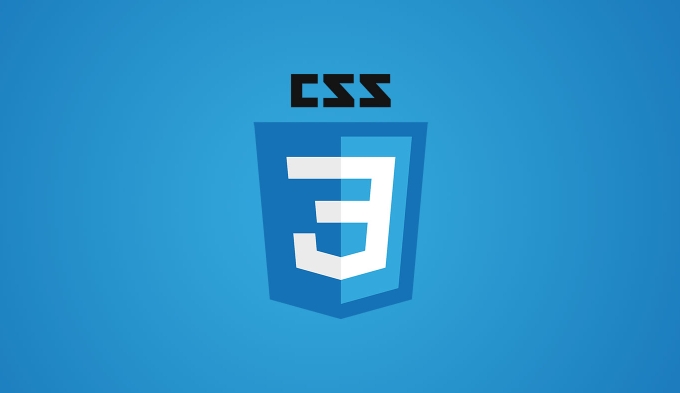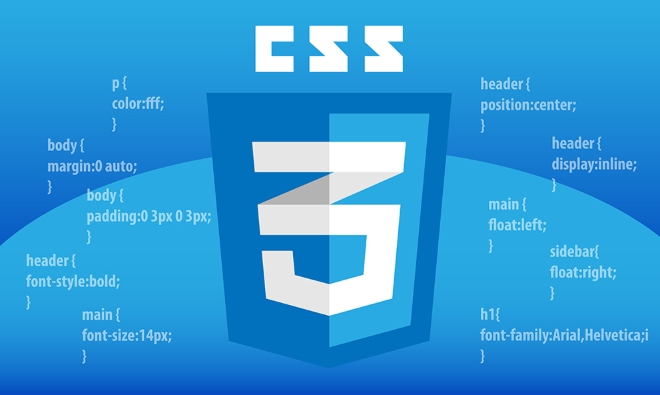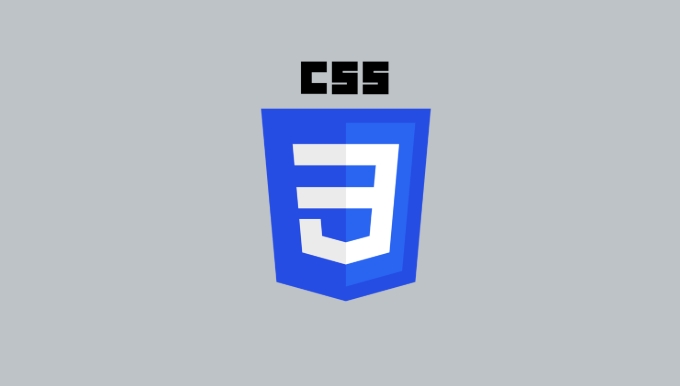 Web Front-end
Web Front-end
 CSS Tutorial
CSS Tutorial
 How do Flexbox properties `justify-content` and `align-items` differ?
How do Flexbox properties `justify-content` and `align-items` differ?
How do Flexbox properties `justify-content` and `align-items` differ?
Jul 20, 2025 am 03:38 AMjustify-content controls alignment along the main axis while align-items works on the cross axis. 1. justify-content aligns items horizontally when flex-direction is row, with values like flex-start, flex-end, center, space-between, and space-around. 2. align-items handles vertical alignment in a row layout, using values such as flex-start, flex-end, center, stretch, and baseline. 3. Together, they enable two-dimensional centering, like horizontally and vertically centering items by combining justify-content: center and align-items: center. 4. The roles of these properties switch when flex-direction changes to column, making justify-content affect vertical alignment and align-items handle horizontal alignment.

When working with Flexbox, two of the most commonly used properties for alignment are justify-content and align-items. They both control how flex items are aligned, but they do so along different axes — which is the key difference between them.

justify-content aligns items along the main axis
This property deals with the main axis of the flex container. The main axis depends on the direction set by flex-direction, which could be horizontal (row or row-reverse) or vertical (column or column-reverse).
Common values include:

-
flex-start(default): Items are packed toward the start of the main axis. -
flex-end: Items are packed toward the end of the main axis. -
center: Centers items along the main axis. -
space-between: Distributes items evenly, with the first item at the start and the last at the end. -
space-around: Items have equal space around them.
For example, if you're using flex-direction: row, then justify-content controls horizontal alignment.
.container {
display: flex;
justify-content: center; /* centers items horizontally */
}align-items aligns items along the cross axis
While justify-content works on the main axis, align-items affects alignment on the cross axis, which is perpendicular to the main axis.

So again, if your flex container uses flex-direction: row, the cross axis becomes vertical, and align-items controls vertical alignment.
Common values include:
flex-start: Aligns items to the top of the cross axis.flex-end: Aligns items to the bottom.center: Centers items vertically (in the case of a row layout).stretch(default): Items stretch to fill the container.baseline: Aligns items based on their text baseline.
Here’s an example:
.container {
display: flex;
align-items: center; /* centers items vertically when flex-direction is row */
}When they work together
You often use both properties together to fully control alignment in two dimensions. For instance, centering a group of items both horizontally and vertically is as simple as:
.container {
display: flex;
justify-content: center;
align-items: center;
}This setup is super common for centering content inside a full-screen section or modal.
It's important to remember that changing flex-direction will affect what "main" and "cross" mean. So if you switch to column, justify-content will affect vertical alignment and align-items will affect horizontal alignment.
That’s the core difference — basically, one works on the main axis, the other on the cross. Once you get the hang of how each axis behaves under different flex directions, these two properties become second nature.
The above is the detailed content of How do Flexbox properties `justify-content` and `align-items` differ?. For more information, please follow other related articles on the PHP Chinese website!

Hot AI Tools

Undress AI Tool
Undress images for free

Undresser.AI Undress
AI-powered app for creating realistic nude photos

AI Clothes Remover
Online AI tool for removing clothes from photos.

Clothoff.io
AI clothes remover

Video Face Swap
Swap faces in any video effortlessly with our completely free AI face swap tool!

Hot Article

Hot Tools

Notepad++7.3.1
Easy-to-use and free code editor

SublimeText3 Chinese version
Chinese version, very easy to use

Zend Studio 13.0.1
Powerful PHP integrated development environment

Dreamweaver CS6
Visual web development tools

SublimeText3 Mac version
God-level code editing software (SublimeText3)
 What are common CSS browser inconsistencies?
Jul 26, 2025 am 07:04 AM
What are common CSS browser inconsistencies?
Jul 26, 2025 am 07:04 AM
Different browsers have differences in CSS parsing, resulting in inconsistent display effects, mainly including the default style difference, box model calculation method, Flexbox and Grid layout support level, and inconsistent behavior of certain CSS attributes. 1. The default style processing is inconsistent. The solution is to use CSSReset or Normalize.css to unify the initial style; 2. The box model calculation method of the old version of IE is different. It is recommended to use box-sizing:border-box in a unified manner; 3. Flexbox and Grid perform differently in edge cases or in old versions. More tests and use Autoprefixer; 4. Some CSS attribute behaviors are inconsistent. CanIuse must be consulted and downgraded.
 Describe the `vertical-align` property and its typical use cases
Jul 26, 2025 am 07:35 AM
Describe the `vertical-align` property and its typical use cases
Jul 26, 2025 am 07:35 AM
Thevertical-alignpropertyinCSSalignsinlineortable-cellelementsvertically.1.Itadjustselementslikeimagesorforminputswithintextlinesusingvalueslikebaseline,middle,super,andsub.2.Intablecells,itcontrolscontentalignmentwithtop,middle,orbottomvalues,oftenu
 What is the accent-color property?
Jul 26, 2025 am 09:25 AM
What is the accent-color property?
Jul 26, 2025 am 09:25 AM
accent-color is an attribute used in CSS to customize the highlight colors of form elements such as checkboxes, radio buttons and sliders; 1. It directly changes the default color of the selected state of the form control, such as changing the blue check mark of the checkbox to red; 2. Supported elements include input boxes of type="checkbox", type="radio" and type="range"; 3. Using accent-color can avoid complex custom styles and extra DOM structures, and maintain native accessibility; 4. It is generally supported by modern browsers, and old browsers need to be downgraded; 5. Set accent-col
 How to compile SCSS to CSS?
Jul 27, 2025 am 01:58 AM
How to compile SCSS to CSS?
Jul 27, 2025 am 01:58 AM
InstallDartSassvianpmafterinstallingNode.jsusingnpminstall-gsass.2.CompileSCSStoCSSusingthecommandsassinput.scssoutput.css.3.Usesass--watchinput.scssoutput.csstoauto-compileonsave.4.Watchentirefolderswithsass--watchscss:css.5.Usepartialswith_prefixfo
 How to change text color in CSS?
Jul 27, 2025 am 04:25 AM
How to change text color in CSS?
Jul 27, 2025 am 04:25 AM
To change the text color in CSS, you need to use the color attribute; 1. Use the color attribute to set the text foreground color, supporting color names (such as red), hexadecimal codes (such as #ff0000), RGB values (such as rgb(255,0,0)), HSL values (such as hsl(0,100%,50%)), and RGBA or HSLA with transparency (such as rgba(255,0,0,0.5)); 2. You can apply colors to any element containing text, such as h1 to h6 titles, paragraph p, link a (note the color settings of different states of a:link, a:visited, a:hover, a:active), buttons, div, span, etc.; 3. Most
 CSS transitions tutorial
Jul 26, 2025 am 09:30 AM
CSS transitions tutorial
Jul 26, 2025 am 09:30 AM
CSStransitionsenablesmoothpropertychangeswithminimalcode,idealforhovereffectsandinteractivefeedback.1.Usethesyntaxtransition:propertydurationtiming-functiondelay;todefinetransitions,liketransition:background-color0.3sease0.1s;.2.Specifytransition-pro
 How to purge unused CSS?
Jul 27, 2025 am 02:47 AM
How to purge unused CSS?
Jul 27, 2025 am 02:47 AM
UseautomatedtoolslikePurgeCSSorUnCSStoscanandremoveunusedCSS;2.IntegratepurgingintoyourbuildprocessviaWebpack,Vite,orTailwind’scontentconfiguration;3.AuditCSSusagewithChromeDevToolsCoveragetabbeforepurgingtoavoidremovingneededstyles;4.Safelistdynamic
 HTML `style` Tag: Inline vs. Internal CSS
Jul 26, 2025 am 07:23 AM
HTML `style` Tag: Inline vs. Internal CSS
Jul 26, 2025 am 07:23 AM
The style placement method needs to be selected according to the scene. 1. Inline is suitable for temporary modification of single elements or dynamic JS control, such as the button color changes with operation; 2. Internal CSS is suitable for projects with few pages and simple structure, which is convenient for centralized management of styles, such as basic style settings of login pages; 3. Priority is given to reuse, maintenance and performance, and it is better to split external link CSS files for large projects.





